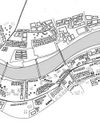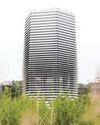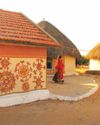It is quite ironic that the successor of one of the most prominent architecture firms the world is someone we have hardly heard anything about. And what little information that has been circulating is most likely criticism, or curiosity. Setting the record straight, we speak to Patrik Schumacher, the new principal of Zaha Hadid Architects about his vision for not just the firm’s future but also the architectural discipline on the whole. In what can only be termed classic ‘Schumacherism’, he minces no words in this interview as he speaks about his misinterpreted, controversy-ridden manifesto, the idea of starchitecture, the role of critics in the architectural discourse, and parametricism – an approach that relies on data and digital algorithms to formulate design responses to environmental parameters, which he sees as the dominant, single style for contemporary avant-garde practice.

IA&B: What is your vision for ZHA? Where would you like to see ZHA in say 10 years from now since the benchmark is already high?
Patrik Schumacher: ZHA is now addressing projects of all scales, all programme categories and building types, on all continents, from urbanism via architecture to interior design and product design. But in terms of vision, the focus is on the development of our discipline as a whole, and its consequent contribution to the development of the global built environment at large. As the most mature, the largest and the most prominent protagonist of parametricism, ZHA has an important role to play in leading the discipline out of its current retroorientation. Also, we intend to dedicate the next ten years to scaling up and rolling out the results of 35 years of research. At the same time, we are accelerating our Research and Development efforts – to twice as much as before. Overall, it will be clear in the coming years that ZHA has no intention to rest on its laurels.
IA&B: Is your vision in alignment with that of Zaha Hadid’s? Or have you a completely different future progression for the firm?
Patrik Schumacher: My vision is to follow the trajectory of Zaha’s vision. While she was perhaps not explicitly aiming to create a large firm, her expansive ambition was certainly leading us in this direction. Like her, I do not want to pay for an increasing size with a diminishing originality. That is why the investment in continuous research is so important at ZHA, for both in-house and universitybased research.
IA&B: Your urban policy manifesto had garnered considerable criticism in the past. Do you think it was wrongly interpreted? What is your stance on the same today?
Diese Geschichte stammt aus der November 2017-Ausgabe von Indian Architect & Builder.
Starten Sie Ihre 7-tägige kostenlose Testversion von Magzter GOLD, um auf Tausende kuratierte Premium-Storys sowie über 8.000 Zeitschriften und Zeitungen zuzugreifen.
Bereits Abonnent ? Anmelden
Diese Geschichte stammt aus der November 2017-Ausgabe von Indian Architect & Builder.
Starten Sie Ihre 7-tägige kostenlose Testversion von Magzter GOLD, um auf Tausende kuratierte Premium-Storys sowie über 8.000 Zeitschriften und Zeitungen zuzugreifen.
Bereits Abonnent? Anmelden

Interlacing Perspectives
‘Meraki-2019’ A visionary Seminar series presented by Dr.Baliram Hiray College of Architecture, Bandra(East), Mumbai.

Facilitating A Community Through Architectural Practice
The humble, self-designed, self-built and organically planned home built by the majority of the world population rarely gets appreciated and critiqued as a viable lesson in architectural design.

The Art Of Solving Problems Creatively
The practice of architecture is perhaps incomplete without the complement of a variety of other arts.

Upcycling towards a playful tomorrow
Play is like the middle child, often forgotten, and always taking a back seat. For young kids, play can simply be running around, armwrestling with friends, building sandcastles on the beach, or singing popular music tracks in the shower.

Balancing The Poetics And Pragmatism Of Everyday Design
Humanity is faced with an oxymoronic crisis. The crisis involves the earth, the environment, impending looms of climate change, deforestation, loss of species, dwindling resources etc.

Just Give Me Some Space: Discussions And Beyond
Just Give Me Some Space (JGMSS) is Suha Riyaz Khopatkar’s debut book that paints a portrait of the dynamic life of an architecture student.

The Next In Vernacular Architecture
Architecture has become a capitalist.

Rethinking The Future: Architecture And Its Education
“I want to be like animals, the bird makes a nest in one or two days, the rat digs a hole in a night, but intelligent humans like us spend 30 years to have a house, that’s wrong.” - Jon Jandai

Uniting The Human-Scale With The City-Scale
London-based architect Usman Haque is famed for his interactive architectural systems, and for his exploration of newer, more effective ways of creating human engagement and interaction through his designs. Indian Architect & Builder caught up with him, to quiz him on a variety of topics such as his journey as an architect, his inspirations and philosophies, architects using the digital revolution to their advantage, and more!

Framing spaces
Almost every architect also doubles as a photographer or at least an enthusiast.